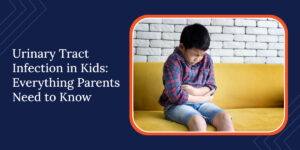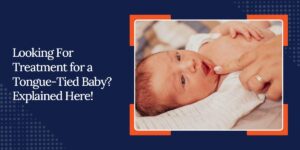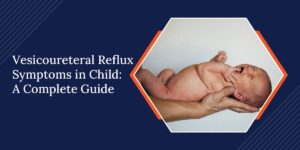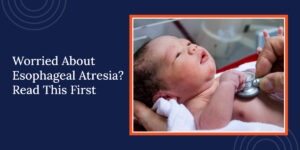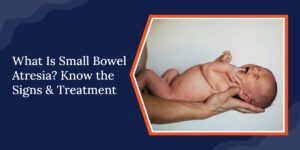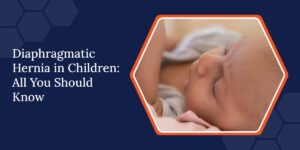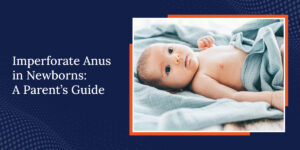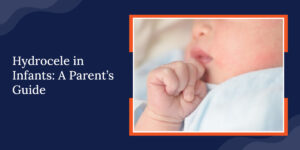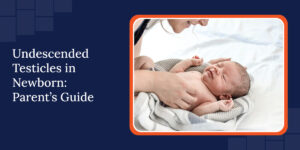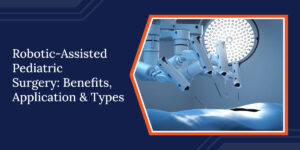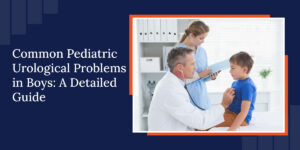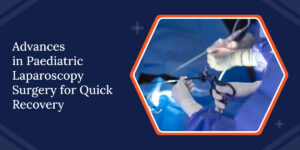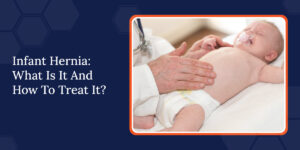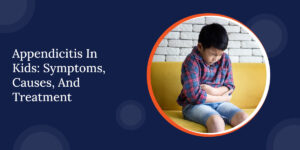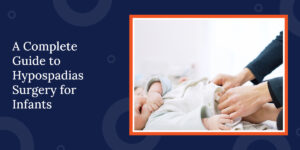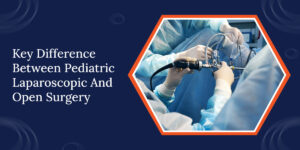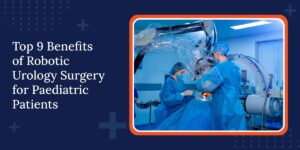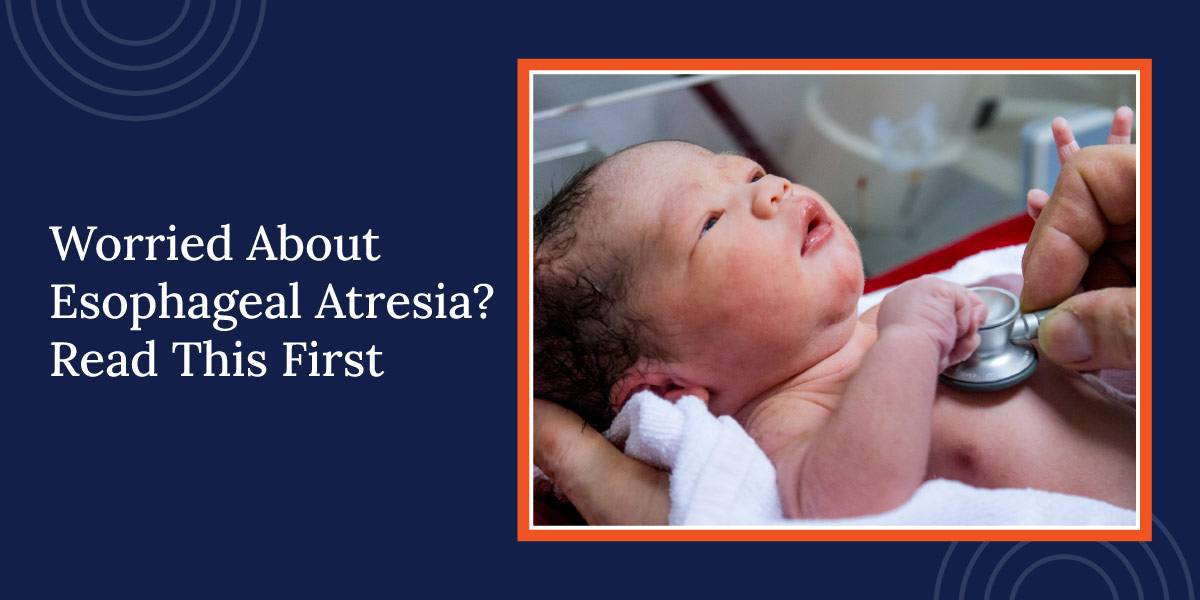
When the oesophagus doesn’t form properly during pregnancy, your baby may have difficulty with feeding and breathing. The sooner you recognise the signs, the sooner your baby can get the care they need.
You’ll find everything here: what oesophageal atresia is, what causes this congenital oesophageal atresia, how it’s treated, and what recovery looks like.
A] What Is Oesophageal Atresia?
Esophageal atresia is a birth defect where the oesophagus doesn’t fully connect from top to bottom. One or both ends may stop short and form a pouch. In many cases, the lower part of the oesophagus connects to the windpipe instead. This abnormal connection is called a tracheo-oesophageal fistula.
Due to this, food and liquid can’t pass through normally. It’s important to understand that this condition isn’t caused by anything you did; this congenital malformation happens during early development in the womb.
Need Support With Oesophageal Atresia Treatment? – Contact Us Today
B] Common Signs and Symptoms
After birth, there are signs that may indicate this condition. You might notice the following symptoms:
- Your baby coughs or chokes while feeding.
- There is excessive frothy saliva in the mouth.
- Breathing becomes strained or noisy.
- The skin may turn blue (cyanosis) while feeding.
- Difficulty keeping milk down (frequent spitting or regurgitation).
- Repeated chest infections causing difficulty in breathing.
These signs of oesophageal atresia usually appear soon after your baby starts feeding. It’s important to contact a doctor in case of reflux.
C] What Causes Oesophageal Atresia?
The exact cause of congenital oesophageal atresia is not known. It seems to begin early in pregnancy as the oesophagus forms. Genes might play a role in certain newborn oesophagus abnormalities, but in most instances the condition occurs without a known reason.
This condition often shows up with other health issues, such as:
- Cardiac defects
- Blockages in the small intestine (duodenal atresia)
- Spine differences (vertebral defects)
- A pattern called VACTERL association, which refers to a group of birth defects
If your baby is diagnosed with oesophageal atresia, the care team will likely check for any related anomalies or birth defects.
D] Types of Oesophageal Atresia
Doctors classify esophageal atresia into several types, depending on how the oesophagus and windpipe are connected. Below are the esophageal atresia types:
- Type A: Both ends are closed. There’s no connection to the windpipe.
- Type B: The top end connects to the windpipe. The bottom end ends in a pouch.
- Type C: The top part ends in an oesophageal pouch. The bottom end connects to the windpipe. This is the most common type and usually involves a distal tracheo-oesophageal fistula.
- Type D: Both ends connect to the windpipe.
- Type E (H-type): The oesophagus is connected, but there’s a narrow passage to the windpipe.
In most types, the upper oesophagus ends in a pouch. Each type helps the care team plan the right treatment.
E] Diagnosis and Tests
If your baby has trouble feeding or there’s little to no air in the stomach, the paediatric surgeons begin diagnostic testing.
A soft NG tube is usually passed through your baby’s nose or mouth. If the tube can’t reach the stomach, it’s a strong sign of esophageal atresia. An X-ray often shows the tube coiled in the upper chest.
Before birth, medical professionals might see signs like too much amniotic fluid. But most oesophagus diagnoses are confirmed after your baby is born.
If you’re still deciding on the right specialist for your baby’s care, learn more about the benefits of choosing a paediatric surgeon to ensure expert diagnosis and treatment.
F] Treatment and Surgical Options
Surgery is the only definitive treatment for oesophageal atresia. It’s usually done soon after birth. The exact method depends on how much of the oesophagus is formed and whether there’s a connection to the windpipe.
If the gap between the esophageal ends is small, doctors can connect them right away. That’s called a primary surgical repair.
If the gap is wide, your baby might need a feeding tube in the stomach first. This is called a gastrostomy tube. The full repair comes later, when the oesophagus can be safely joined.
If there’s a connection to the windpipe, that also needs to be closed. This is often done during the same surgery and is referred to as an OATOF repair.
Recovery takes time after esophageal repair. Feeding is usually introduced gradually after paediatric surgery, and your baby might need extra support initially.
G] Recovery and Life After Surgery
After surgery, your baby may still need help with feeding. A feeding tube may be used while recovery continues. Swallowing may improve gradually.
Reflux is common and may cause discomfort. Your baby may need medicine or feeding adjustments. Some babies benefit from therapy to support their feeding progress.
Follow-ups are important with paediatric surgeons. Your care team will track growth and help manage any issues that come up.
H] When You Should See a Doctor
Even after surgery, some signs of esophageal atresia mean it’s time to contact your medical professional. Watch for:
- Ongoing trouble with swallowing
- Frequent vomiting
- Coughing or choking with feeds
- Slow weight gain
- Signs of breathing problems
- Recurring aspiration pneumonia
Timely care can prevent bigger problems and support steady recovery.
Need Support With Oesophageal Atresia Treatment? – Contact Us Today
I] Conclusion
Oesophageal atresia is a serious but treatable condition. Surgery often resolves the problem, and many children go on to live healthy lives.
Your role after surgery is key. Keep up with medical visits, follow feeding plans, and ask questions. The right support makes a big difference. Find the best paediatric surgeon in Dubai for effective treatment.
Does your child show symptoms similar to this condition? Book an appointment with Dr. Bhushanrao Jadhav, a highly skilled paediatric surgeon who carefully evaluates underlying causes and offers treatment tailored to your child’s unique needs.
J] Frequently Asked Questions
- What is the survival rate of oesophageal atresia?
With timely diagnosis and proper treatment, more than 90 per cent of babies survive this condition.
- Can babies with oesophageal atresia live a normal life?
Yes, with timely surgery and proper follow-up care, most children grow up healthy and lead a normal life.
- Is oesophageal atresia a high-risk condition?
Yes, it can be, especially with other health issues, but surgery and follow-up care reduce the risk.
- Can oesophageal atresia be detected before birth?
Sometimes. If fluid levels in the womb are high, doctors may suspect it. But most cases are diagnosed after birth.

Dr. Bhushanrao Jadhav
Dr. Bhushanrao Jadhav is a highly skilled Pediatric Surgeon and Urologist specialising in minimally invasive and robotic surgeries for children. With advanced training from leading institutions in the UK, India and USA, he brings expertise in treating complex genitourinary conditions and neonatal surgical ailments. Driven by compassion and innovation, Dr. Jadhav has pioneered pediatric robotic surgery programs in Pune, India, ensuring world-class care tailored to children’s unique needs.

